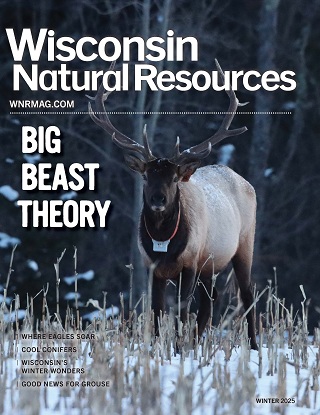Preventive measures
WITH NATURE IN PERIL ON MANY FRONTS, PROACTIVE CONSERVATION MAY HELP WARD OFF EXTINCTIONS
Lisa Gaumnitz
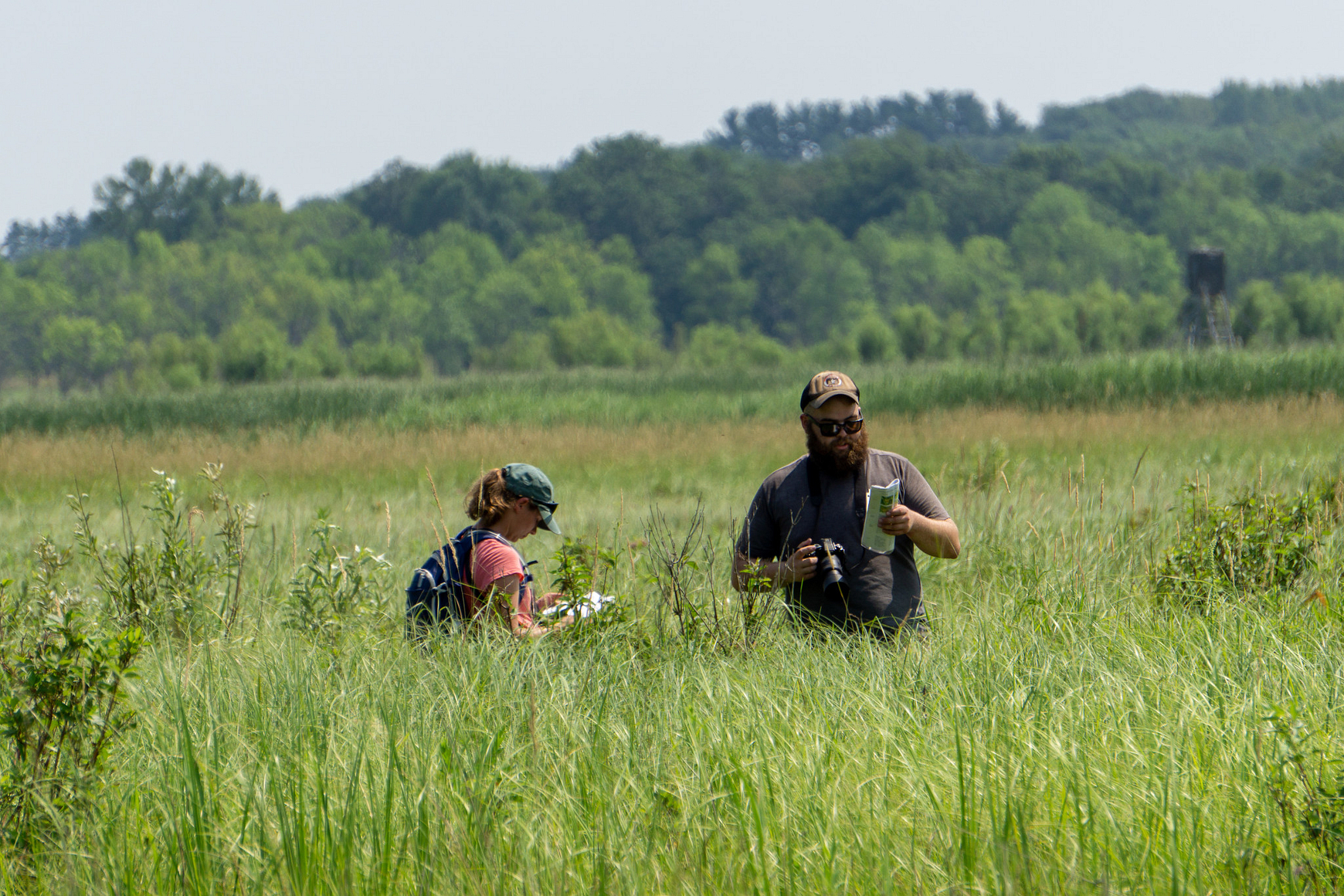 Intern Anna Mancheski, left, and George Jensen, a DNR conservation biologist, survey for endangered Poweshiek skipperling butterflies.
Intern Anna Mancheski, left, and George Jensen, a DNR conservation biologist, survey for endangered Poweshiek skipperling butterflies.© JACK SILVERBERG
In a field of waist-high prairie grasses with the July heat and humidity beginning their daily choke hold, DNR conservation biologist George Jensen and intern Anna Mancheski slather on sunscreen and head out for the morning in search of one of the world's rarest butterflies, the Poweshiek skipperling.
A small orange butterfly with distinctive white veins on the underside of its wings, the Poweshiek was once common across the Midwest but declined as tall grass prairies gave way to farms, cities and roads. Its population crashed suddenly a decade ago throughout its range.
In recent years, the butterfly has been known from only a few sites in Michigan, Manitoba in Canada and this and another State Natural Area in southern Wisconsin.
Jensen and Mancheski slog through sedge and prairie grasses and knee-deep water in this "wet-mesic" prairie. Less than 1% of prairies present in Wisconsin before Euro-American settlement remain, and wet-mesic prairies, characterized by tall prairie grasses found on wetland complexes, are some of the rarest left.
The Poweshiek was last documented here in 2011 and at a Waukesha County State Natural Area in 2012.
"This is our fifth survey this summer; we're really doing our due diligence for sure," Mancheski says. "Finding them is really like finding the needle in the haystack."
Historical records and satellite images suggest this site has never been plowed or developed. More than 130 species of plants have been recorded here, and the property is rich with bird and butterfly species, including several that are federally or state endangered in addition to the Poweshiek.
As Mancheski and Jensen wade through the wet prairie, with GPS units recording their meandering path, they flush out monarch butterflies and eyed browns. Less often, they stir up skippers including Dunn, European and Delaware, that are in the same family as the Poweshiek skipperling.
To an untrained eye, these skippers all look alike, and even to experts, they can be difficult to distinguish.
When a skipper floats up, Mancheski photographs it with her smartphone and compares the image to ones on Wisconsin butterflies.
The two surveyors call out the names of the species as they identify them and Mancheski records them on a sheet.
After several hours, with the sun now high overhead, Jensen and Mancheski end their search. There are no Poweshieks recorded on this day.
The possible reality is distressing: Poweshieks may have disappeared here, bringing this butterfly one step closer to extinction.
Sign of global crisis
The state of the Poweshiek skipperling is a sobering reminder that human-caused extinction of species is not an artifact of earlier eras, like the dodo bird in the 1600s and the passenger pigeon in the early 1900s, but is happening right now.
Worldwide, plant and animal species are vanishing at tens to hundreds of times faster than average over the last 10 million years, according to a widely publicized United Nations biodiversity report earlier this year.
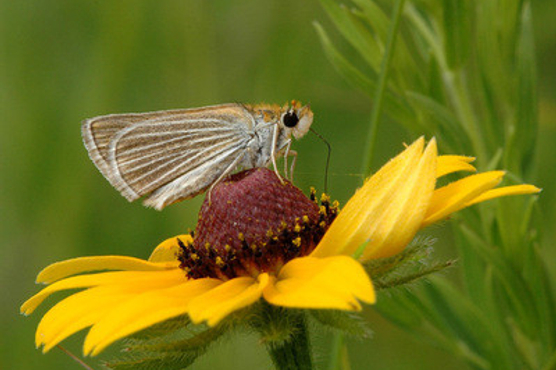 Once common in the Midwest, Poweshiek skipperlings are now found at only a few sites.
Once common in the Midwest, Poweshiek skipperlings are now found at only a few sites.© MIKE REESE
One million species could go extinct in coming decades, the report concludes, if action is not taken to reduce factors driving them off the cliff: habitat loss or degradation, direct killing of species, climate change, pollution, and invasion by nonnative plants, animals and pathogens.
"The health of ecosystems on which we and all other species depend is deteriorating more rapidly than ever," says Sir Robert Watson, a British scientist and chairman of the U.N. group behind the 2019 report. "We are eroding the very foundations of our economies, livelihoods, food security, health and quality of life worldwide."
In September, scientists from Smithsonian and the Cornell Lab of Ornithology released other startling findings in the journal Science. North America's breeding bird populations have dropped by 3 billion birds – nearly 30% – since the 1970s. Even juncos, swallows, warblers, orioles, meadowlarks and other familiar birds have declined.
Drew Feldkirchner, who leads DNR staff working to protect and restore endangered species, welcomes the recent spotlight on the global extinction crisis and bipartisan legislation introduced in the U.S. Congress to more fully fund proactive conservation.
The Recovering America's Wildlife Act is aimed at rare and declining native species in the U.S., to keep them from becoming endangered. It calls for directing $1.3 billion annually in existing federal revenues to states to fund their science-based wildlife action plans. Another $97 million annually would go to tribal fish and wildlife managers for work on tribal lands.
"Preventing species from becoming endangered is a win-win for all of us – no matter where we stand on conservation issues," says Feldkirchner, director of DNR's Natural Heritage Conservation Program.
"We're making some great strides in Wisconsin recovering endangered species, but the threats continue to mount," he says. "Now is the time as a society to ask whether we are willing to take a new approach.
"We can conserve our natural heritage for our children and grandchildren, sustain healthy fish and wildlife populations for hunters and anglers, reduce regulatory burdens and uncertainty for businesses, and safeguard the natural world so important to our quality of life."
Critical law but last resort
Though the term "endangered species" may conjure images of elephants, tigers and rhinos in far-off lands, Wisconsin has 232 plants and animals now "endangered" or "threatened" and protected under the 1971 state endangered species law.
That state law, one of the first in the country, makes it illegal for people to kill, transport or possess endangered animals in Wisconsin. Endangered plants have the same protections on public lands but not private lands.
The federal Endangered Species Act was passed in 1973 and covers declining species across the United States and internationally. Twenty-six species in Wisconsin are on the federal endangered and threatened species list, from the fingernail-sized Karner blue butterfly to the whooping crane, the world's tallest and rarest crane, to the delicate eastern prairie white fringed orchid.
The federal law carries the same prohibitions as Wisconsin's law but also makes it illegal to "harass" listed species by, for example, scaring birds off their nests or entering caves when bats are hibernating. The federal law also can protect the "critical habitat" necessary for endangered species, while Wisconsin's law is limited to protecting individual plants and animals, says Owen Boyle, DNR species management chief.
Both endangered species laws are very important in Wisconsin, Boyle says. Their combined protections helped bald eagles fly off the state endangered list in 1997 and the federal list a decade later.
Trumpeter swans, ospreys, Cooper's hawks, gray wolves and plants including the yellow giant hyssop are among the species restored and removed from the state list, and the laws have collectively helped keep hundreds of declining species from disappearing entirely.
Recent U.S. Fish and Wildlife Service changes to the rules carrying out the federal Endangered Species Act are now tied up in court, but Boyle says it's important to understand the federal law is meant only as a last resort.
"The federal law has never been enough by itself," Boyle says. "When a species is listed, it's because the species is really in trouble, but the focus should be to prevent that from happening. It's so much more cost effective to conserve species before they need legal protection."
Partnerships power key work
Surveys such as the ongoing hunt for the Poweshiek skipperling are the foundation for this sort of rare species work by DNR's Natural Heritage Conservation staff and partners.
DNR uses species' locations and population data to determine if species are rare, using standardized methods carried out internationally.
"We are responsible for knowing where many hundreds of rare species are found and for assessing their abundance, so we are fortunate so many partners like government agencies, university researchers and volunteers are pitching in," Feldkirchner says.
"We also do our best to determine why those species are rare. Then, if we can identify conservation actions to help them, we decide if we are the best organization to do the work, given our level of resources and our particular strengths."
Partnerships leveraging resources and expertise are critical for getting things done.
For example, federal and University of Wisconsin wildlife health experts led development of a vaccine to treat cave bats infected with white-nose syndrome. The fungus has killed 6 million bats in eastern North America since 2006 and has reduced bat populations to zero at some Wisconsin hibernation sites and decreased others by 72% to 97%.
DNR bat biologists helped with laboratory and field testing of vaccines, and this fall worked with partners to vaccinate bats in the wild at two hibernation sites.
Benefits of habitat management
Rare species often rely on rare habitats, so restoring and managing habitat are very important tools. DNR's NHC, wildlife management and forestry staff, as well as many partner organizations, are responsible for managing State Natural Areas. These sites are known to support 90% of the plant species and 75% of the animal species on Wisconsin's endangered and threatened list.
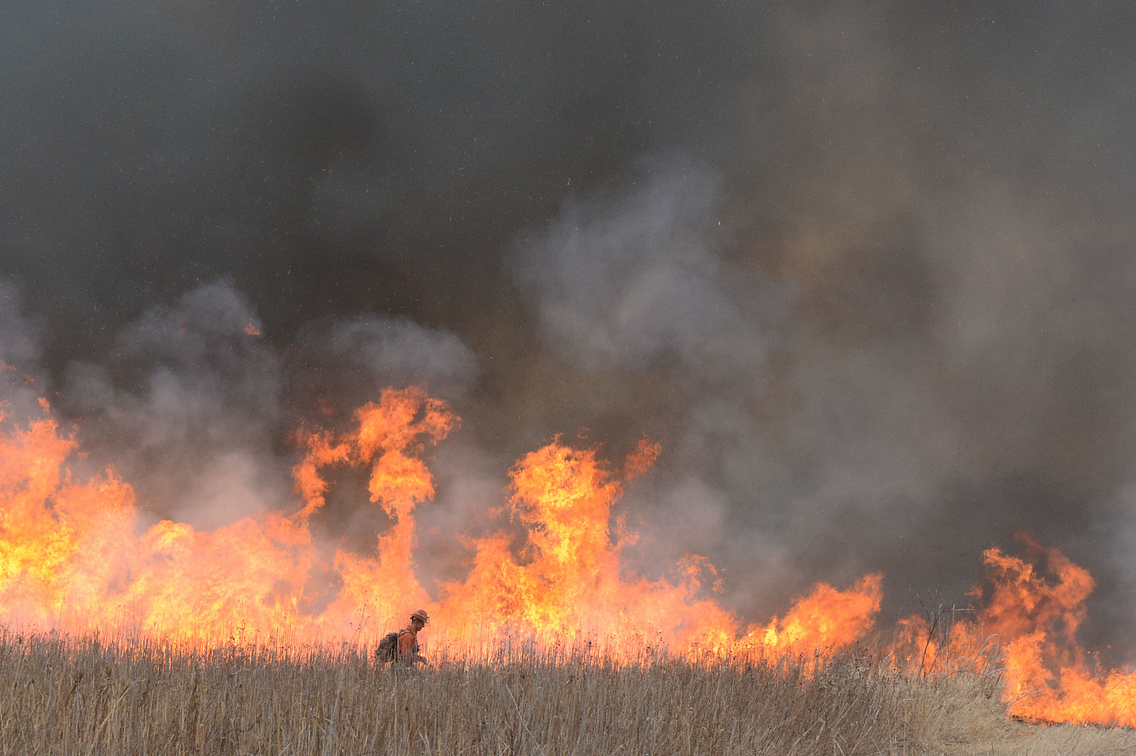 Fire is a critical tool used to provide quality habitat for many species and for maintaining fire-dependent wetlands, prairies, savannas and barrens.
Fire is a critical tool used to provide quality habitat for many species and for maintaining fire-dependent wetlands, prairies, savannas and barrens.© BOB MANWELL
State Natural Area crews control invasive species, use prescribed fire to maintain fire-dependent landscapes such as prairies, oak savannas and barrens, and restore native plants on dozens of sites annually, helped by volunteers at some 43 sites and growing.
At the State Natural Area Jensen and Mancheski surveyed for Poweshiek skipperlings, Jensen and other crew members have been trying to curtail the hybrid cattail and invasive phragmites to encourage growth of native wetland plant species.
The work has been paying off with increased use of the habitat by secretive rails and egrets. Crew members also control invasive buckthorn and garlic mustard on parts of the property, and a prescribed burn is on the horizon.
Recent research by UW-Madison's Amy Alstad shows the value of such work for rare species and rare landscapes, particularly for prairies. Those not converted to agriculture continued to degrade through a lack of invasive species control and prescribed fire.
Alstad's resurvey of 47 prairies studied by famed botanist John Curtis 50-plus years earlier found that while native plant species were vanishing at an accelerating rate overall, those sites that best retained plant diversity and rare species were receiving regular prescribed burns – and most were sites managed by State Natural Area crews.
"Now, more than ever, we need this kind of preventative care for our declining species," Feldkirchner says. "We need efforts to conserve them before they become so rare that they need life-saving measures."
Putting state plans to work
The federal Recovering America's Wildlife Act may be a first step, based on recommendations from a national blue-ribbon panel co-chaired by Bass Pro Shops founder John L. Morris. The panel included representatives from the outdoor recreation industry, energy companies, conservation groups, governments and more.
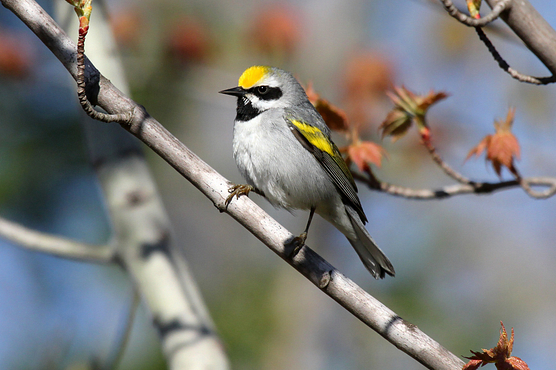 Wisconsin, Minnesota and Manitoba in Canada are home to 95% of the world's remaining golden-winged warblers, a declining species that could benefit significantly from the bipartisan Recovering America's Wildlife Act.
Wisconsin, Minnesota and Manitoba in Canada are home to 95% of the world's remaining golden-winged warblers, a declining species that could benefit significantly from the bipartisan Recovering America's Wildlife Act.© RYAN BRADY
The group's recommendations, reflected in the proposed legislation, aim to keep wildlife from becoming endangered by providing states money to implement their Wildlife Action Plans identifying species and their habitats with the greatest conservation need.
The group estimated that $1.3 billion of dedicated funding is needed annually to implement states' Wildlife Action Plans so states can make lasting progress. Current congressional funding is unpredictable and renewed annually averaging only a fraction of that, about $61 million.
Under Recovering America's Wildlife Act (RAWA) legislation, each state would receive between $13 million and $65 million annually, with the total amount determined by the state's size and population density. Wisconsin would receive an estimated $20 million; currently DNR receives under $1 million annually for the 416 wildlife species addressed in its Wildlife Action Plan.
Gov. Tony Evers and other Great Lakes governors offered "enthusiastic support" for RAWA and urged quick action to pass it in an Oct. 15 letter to Congress.
"We know this model of conservation works," Feldkirchner says. "Deer, wild turkey, waterfowl and other game species thrive because we've invested in their conservation for many decades, largely through hunters' and anglers' support.
"We can repeat these conservation successes for many more species with dedicated funding and sustained attention."
Going forward, Feldkirchner sees fledgling regional and state partnerships to save monarch butterflies as an example of the kind of proactive conservation RAWA could foster.
Midwestern states and groups within each state are working collaboratively to voluntarily restore monarch habitat and reverse a more than 80 percent decline in populations of the iconic butterfly over the last 20 years.
RAWA could help put more funding behind the habitat work, accelerating efforts to add 120 million native milkweed plants by 2038. That, in turn, could help monarchs avoid the more sorrowful fate of the disappearing Poweshieks.
With RAWA garnering bipartisan support, it just might be a welcome shot in the arm for conservation work, Feldkirchner says.
"Together we can keep monarchs and other species we love out of the emergency room."
Lisa Gaumnitz is a natural resources educator and program and policy analyst for the DNR.
Six simple actions to help nature at home
1. HELP PUT WISCONSIN'S WILDLIFE ACTION PLAN TO WORK. Share your opinion with your U.S. senators and representatives on the proposed Recovering America's Wildlife Act, which would redirect existing federal funds to states to help implement their Wildlife Action Plans. Learn more through the Alliance for America's Fish & Wildlife.
2. PLANT NATIVE PLANTS.
Plant a few milkweed and other native plants in pots on your balcony, in your yard or on your back 40. Native plants feed insects, which feed birds, bats, fish and other wildlife. Get started by visiting Plant native plants to help nature.
3. MINIMIZE USE OF CHEMICAL PESTICIDES. Avoid applying pesticides on or near flowering plants used by insects and birds. Minimize use elsewhere, and always follow label restrictions on pesticides.
4. PARTICIPATE. Help care for State Natural Areas at volunteer workdays or join a citizen science project and get trained to identify and help count birds, bats, bumble bees, dragonflies, rare plants and more. See Volunteering with DNR.
5. DONATE TO THE ENDANGERED RESOURCES FUND.
Donate to the state Endangered Resources Fund through your Wisconsin income tax form and your gift is matched by the state, or buy an Endangered Resources license plate. Private donations are critical for conservation work for rare species not eligible for grant funding.
6. LEARN AND TELL OTHERS. Visit Wisconsin's endangered resources to learn more about Wisconsin's diverse native and rare species and State Natural Areas and to subscribe to our periodic electronic updates.

